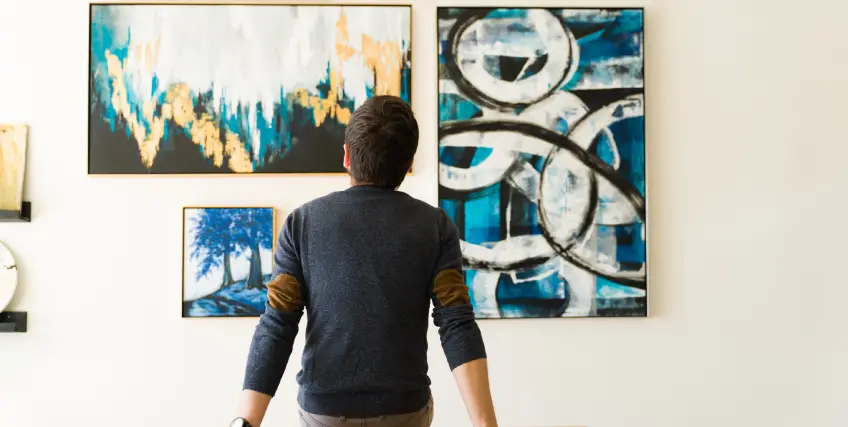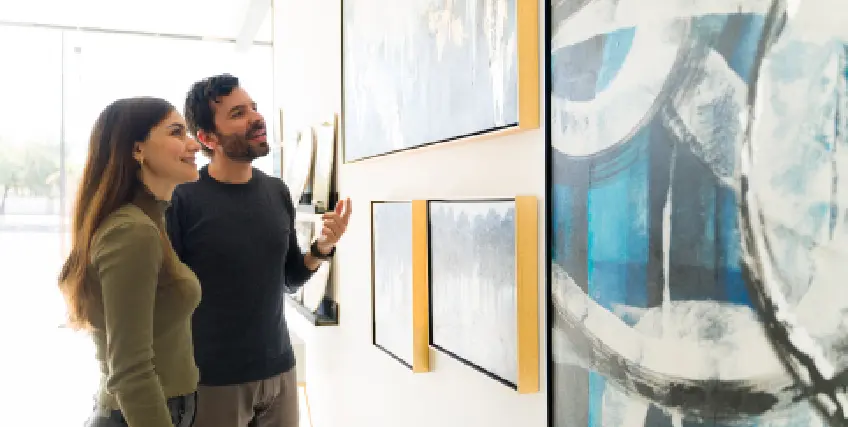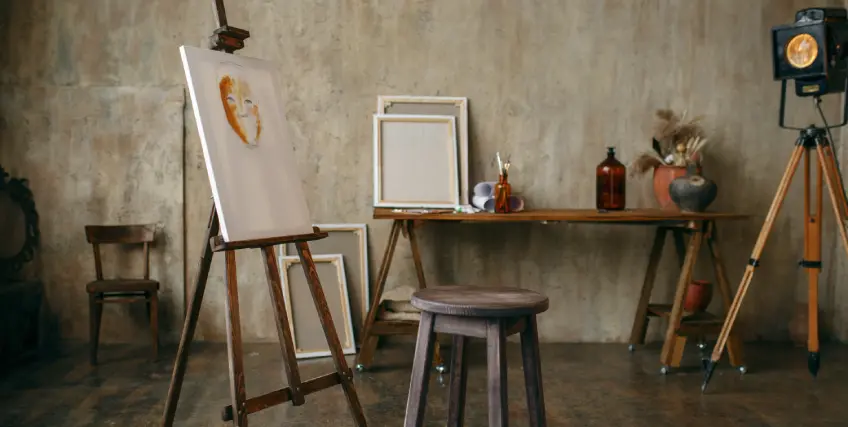Popular Loans for Art Studios: How to Finance Your Creative Space
Aug 14, 2025 | Last Updated on: Aug 18, 2025

Running an art studio is a rewarding endeavor, but even the most creative spaces need practical support, especially when it comes to staying afloat financially. Whether you're opening your first studio, upgrading equipment, or expanding to serve more students, the right funding can help you identify and reach your vision.
If you’re looking for ways to fund your small business dreams, here’s a look at some of the available loans for art studios, from traditional financing options to alternative funding sources like grants and crowdfunding. Whether you’re an artist, art instructor, or creative entrepreneur, understanding your financing options can help you make confident decisions and fuel the next stage of your artistic journey.
Understanding the Financial Needs of an Art Studio
Before you can choose between different art business loans, it's important to first identify your studio’s goals and financial needs. These might vary depending on whether you’ll be a small startup with just one employee (you!) or if you plan to hire multiple employees to run everything from classes to social media. If you need cash to buy real estate and get a new space up and running, your financial needs will be different than if you just plan to make upgrades to an existing location or buy some new equipment.
Some reasons you might need financial support from various types of loans include if you’re:
- Launching a new studio: This might mean buying or leasing studio space, purchasing initial supplies, and marketing to attract students or clients.
- Upgrading equipment: Investing in high-quality easels, kilns, photography gear, digital tablets, or other specialized tools can be a costly part of your business plan.
- Hiring staff or instructors. Expanding your class offerings may mean bringing on teachers who have additional or specialized expertise.
- Making studio renovations or expansions: Building out additional classrooms, gallery spaces, or shared creative zones can be very costly. This upfront cost also has a high likelihood of exceeding your financial projections, so planning ahead with a slightly higher loan amount ensures you have enough to see the project through.
- Managing cash flow: First-time business owners quickly learn that keeping things running often means navigating seasonal income fluctuations, emergency expenses, or delayed client payments. The right loans for art studio owners can offer working capital to keep your business afloat in the short-term.
Traditional Loan Options for Art Studios
Every stage of growth requires a different financing strategy, and sometimes even the use of multiple different loans for art studios. Here are the most common loan types and funding options available to artists today.
1. SBA Loans for Artists
The U.S. Small Business Administration (SBA) offers a range of loan programs ideal for creative business owners. While there’s no specific SBA loan for art studios, many artists can qualify for these small business loans through their everyday operations.
There are a few different SBA loan options to consider, depending on how much you need to borrow. SBA 7(a) loans, for example, are great for working capital, renovations, or equipment. They are available for up to $5 million and offer long repayment terms and low interest rates.
SBA microloans are designed for smaller needs, with a business financing limit of up to $50,000. This makes them perfect for startup art studios, certain non-profits, or individual artists with modest funding needs, like hiring staff or buying supplies to host a new class.
It’s important to note that SBA loans have a lengthy loan application process and strict eligibility criteria. Expect to provide multiple years’ worth of tax returns, bank statements, profit and loss statements (P&Ls), and even a business plan as part of the underwriting process. For borrowers who need business funding fast or have a poor (or limited) business credit history, these loans might not be the answer.
2. Term Loans
Term loans are available through many financial institutions such as traditional banks, credit unions, and online business lenders. They provide borrowers with a lump sum upfront that is repaid over a fixed period of time, often with a fixed interest rate.
These loans are ideal for larger one-time expenses, such as building renovations or high-ticket equipment purchases. Many term business loans for art studios are unsecured, meaning they don’t hold any collateral for the debt. Because of this, these loans for art studios are best suited to those with at least a good credit score.
3. Business Lines of Credit
A business line of credit isn’t a loan for art studios, per se, but it does offer on-demand funding if and when you need it. Once open, a line of credit provides flexible access to cash up to your total limit. You’ll only pay interest on the amount you use, making it a popular choice for managing cash flow, covering unexpected expenses, or paying for recurring costs.
4. Equipment Financing
Whether you need pottery wheels, industrial printers, or digital editing stations, equipment financing let you purchase necessary tools by spreading payments over time. The equipment itself often serves as collateral to secure the debt, making this type of loan for art studios easier to qualify for that unsecured loans.
Alternative Funding Options for Artists
Not every artist (or studio) fits neatly into a traditional financing box. Fortunately, there are several alternative sources of funding worth considering, if you don’t think loans for your art studio are the right call.
Grants
Many organizations, arts councils, and foundations offer grants to support creative businesses, and these might be available at the local, state, or even federal level.
Explore opportunities through the National Endowment for the Arts, local arts commissions, or private nonprofits. To improve your chances of getting awarded a grant, constantly research new opportunities, stay organized regarding deadlines, and be sure to apply for multiple opportunities throughout the year.
Crowdfunding
Platforms like Kickstarter, GoFundMe, and Patreon have become popular funding tools for independent creatives. These platforms let you raise money directly from supporters, often in exchange for artwork, lessons, or behind-the-scenes access.
Crowdfunding platforms can be a good alternative to loans for art studio launches, one-time creative projects, or community-driven spaces. And the best part is that you won’t incur any interest charges or have any traditional “debt” like you would with a loan.
Peer-to-Peer Lending and CDFIs
Community Development Financial Institutions (CDFIs) and peer-to-peer lending platforms like Kiva offer loans for art studio owners and small businesses that may not qualify for traditional bank financing. This can make them a great alternative for creatives with limited credit history or non-traditional business models, and those who have a vision for their art studio that others might also be passionate about.
Final Thoughts
Securing funding for your art studio doesn’t have to be intimidating. Whether you're considering loans for art studios, art business loans, or exploring alternative routes like grants and crowdfunding, there’s a financing path out there that fits your vision and your business’s stage of growth.
The key to finding the right loans for your art studio (or alternative to a loan) is knowing your options and choosing the solution that aligns best with your individual business goals. With the right support, your creative space can thrive and evolve, bringing art to life for your community and beyond.
FAQs on Loans for Art Studios
Can I use equipment financing to buy used art equipment?
Some lenders allow equipment financing for used items, especially if they are high-cost and have a clear resale value. Be sure to confirm with each lender about their policy on used or refurbished equipment to make sure you can qualify.
Are there grants available specifically for art studios?
There are so many local and national arts organizations, government agencies, and foundations that offer grants for creative spaces, artist residencies, and community-focused art projects. Most of these get pretty competitive, but it’s still worth looking into as often as you can since they don’t require repayment (like a loan for an art studio would).
Can I get an SBA loan as an artist or creative entrepreneur?
While there’s no specific SBA loan for artists, many artists can qualify for SBA 7(a) or microloans if they operate a formal business — like a studio, gallery, or art school — and meet the basic eligibility requirements. Just know that SBA loan approval can take some time, so it’s not a quick funding option.
What are the best loans for art studios just getting started?
For new studios, secured equipment loans, grants, and raising money through crowdfunding platforms are often the most accessible. These options typically don’t require extensive credit history and offer manageable repayment terms.
Can I get a loan if I’m a freelance artist without a formal business?
It will be very challenging — but not impossible — to take out a loan for an art studio or other art-related business as a freelancer. That’s because to qualify for most loans, you need to show proof of consistent income (through invoices, tax returns, 1099s, etc.) and have a healthy business credit history. Individual contractors and freelancers may still be able to qualify for personal loans, microloans, or loans for art studios through alternative lenders, but it can be difficult.
Frequent searches leading to this page
Term Loans are made by Itria Ventures LLC or Cross River Bank, Member FDIC. This is not a deposit product. California residents: Itria Ventures LLC is licensed by the Department of Financial Protection and Innovation. Loans are made or arranged pursuant to California Financing Law License # 60DBO-35839




